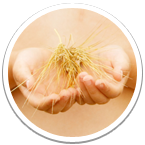Analysis options
Water microbiology laboratory analyses the presence of pathogenic and indicator microbes in water samples as research services for municipalities and waterworks, for example,
- in connection with a suspected waterborne outbreak
- in order to investigate a water-related problem
- identify microbiological threats
- ensure the quality of water
Our selection of analyses include the following methods for testing water samples for pathogenic microbes, indicator microbes, actinomycetes, moulds and yeasts as well as concentrations of microbial nutrients. To trace the origin of intestinal microbes, we also conduct microbial source tracking.
We also study the presence of Legionella bacteria in various water environments, such as in hot water, drinking water, cooling water, humidifier water, spa water and wastewater systems.
In addition to individual analyses, our laboratory has access to emerging methods used in research projects and physicochemical analyses related to measuring the quality of water. These can be used under special circumstances.
The water sample volume required for the analysis is marked in brackets after the name of the analysis method.
Pathogenic microbes
Viruses
- Adenovirus (4 litres or large volume sampling, DEUF)
- Hepatitis A virus (4 litres or large volume sampling, DEUF)
- Norovirus (4 litres or large volume sampling, DEUF)
- Rotavirus (4 litres or large volume sampling, DEUF)
- Sapovirus (4 litres or large volume sampling, DEUF)
Bacteria
- Identification of bacterial strain
- Legionella bacteria (1 litre water or 50 grams more solid sample, for example sludge, compost or mould)
- Microbiological analyses complementing the analysis of Legionella bacteria
- Aerobic microbes (less than 100 ml)
- Heterotrophic bacteria (less than 100 ml)
- Salmonella (5 litres or large volume sampling, DEUF)
- Thermotolerant campylobacter (5 litres or large volume sampling, DEUF)
- Vibrio genus bacteria (1 litre)
Protozoa
- Giardia and cryptosporidium (Large volume sampling, DEUF)
Indicator microbes
- Clostridium perfringens spores and/or vegetative cells (3 litres or large volume sampling, DEUF)
- Enhanced analysis of coliform bacteria and Escherichia coli in water (3 litres or large volume sampling, DEUF)
- Enhanced analysis of intestinal enterococci in water (2 litres or large volume sampling, DEUF)
- F-spesific coliphages (3 litres or large volume sampling, DEUF)
- Heterotrophic colony count at 22 ºC on R2A medium (less than 100 ml)
- Heterotrophic colony count at 22 ºC or at 36 ºC on TH medium (less than 100 ml)
- Somatic coliphages (3 litres or large volume sampling, DEUF)
Tracking the origin of intestinal microbes
- Microbial Source Tracking (MST) (2 litres or large volume sampling, DEUF)
Actinomycetes, moulds and yeasts
- Actinomycetes (1 litre)
- Moulds and yeasts (1 litre)
Microbial nutrients
- Assimilable organic carbon, AOC (500 ml, NOTE: special treatment of sample bottles)
- Microbially available phosphorus, MAP (500 ml, NOTE: special treatment of sample bottles)




